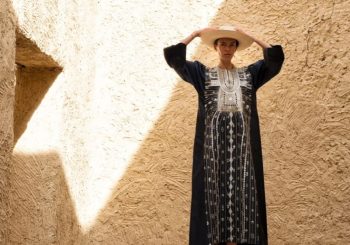Greek Philosopher Plato once said that necessity is the mother of invention. The ancient Egyptians best exemplified this now well-known proverb.
In the span of its 3,000 years of existence, ancient Egypt left its indelible mark in various fields, including math, chemistry, engineering, and literature, laying the groundwork for the civilizations that followed.
Ancient Egyptians’ innovative spirit extended even to leisure activities. While many of the numerous pastimes they designed were lost to time, some still survive today – including their favorite board game, senet.
Senet, or senet net hab, which means ‘the game of passing through’, is a board game that was as old as the Nile valley’s civilization itself. The game is believed to trace back its origins to ancient Egypt’s First Dynasty. However, it made its first definite appearance during the Third Dynasty.
Captivating both commoners and nobles, senet had universal appeal. The only difference in how it was played among different social classes was in the materials used to craft the board and pieces.
While the upper echelons of ancient society had boards made of wood and ivory, like the ones found in the tombs of high Egyptian officials Djehuti and Hery from the 18th Dynasty; common Egyptians had l boards made of a less expensive material resembling pottery called faience. Modest boards were also made of orstone, or simply scratched in soil.
The Third Dynasty tomb of Hesy, a high official during King Djoser’s rule, features a painting depicting senet and dating back to 2686 B.C. Queen Nefertari, wife of Ramses the Great, is depicted engaging in a game of senet on the walls of her tomb; while 18th Dynasty King Tutankhamun had a collection of five game boxes made from precious ebony wood and ivory in his tomb, which was discovered in the 1920s.
The game is thought to have remained popular with the ancient Egyptians until the first century A.D.

The Lore Behind Senet
The term senet translates to “passing,” which carries a dual meaning. It signifies the transition of a soul into the afterlife, while also representing the movement of game pieces as they pass each other during play. Early on, senet enjoyed widespread popularity as a leisure activity. Yet, as time progressed, it acquired religious significance, even finding a place within the famous Egyptian Book of the Dead.

In the New Kingdom, the game of senet became synonymous with the afterlife voyage. Some of the game’s squares represented obstacles a person might encounter on their voyage to the afterlife, while others aided the players. More than just a game; senet was also a metaphor for the struggle to attain immortality or eternal life.
The game held such great meaning to ancient Egypt that it was incorporated into the creation myth of the solar calendar, in which Nūt, the deity of heaven, is impregnated by Geb, the god of the earth. God of the Sun Ra is so incensed by her actions that he forbids her from giving birth on any of the 360 days of the Egyptian calendar.
A desperate Nūt requests assistance from Thoth, the God of Wisdom, who responds by challenging Khonsu, the lord of the moon, to a game of senet, wagering that if he were to win, he could take a portion of the light from each day of the year.
When the game ends and Thoth has won, it is discovered that he has gained five additional days despite taking only a small amount of time from each day. As a result, the moon deity sacrifices five full days, bringing the total number to 365, and with it establishing the ancient Egyptian solar calendar. In these five days, the Goddess of Heaven Nūt and the God of Earth Geb have their five children: Osiris, Seth, Isis, Nephtis, and Horus the Elder.
A Modern Revival
Senet was first popularized when Egyptologist José Manuel Galan discovered a 3,500-year-old senet box while excavating in 2006.
Although the game’s instructions could not be found, researchers have been able to reconstruct its fundamental principles with remarkable accuracy, drawing insights from inscriptions, illustrations, and the discovery of over 120 gaming boards.
There are many different reconstructions of the game’s rules, but in general, the senet board consists of 30 squares arranged in three rows of ten. Some squares contain symbols representing good or bad fortune, which influence gameplay.

The players use four two-sided sticks or knucklebones to advance their counters across the board along a reversed S-shaped path. The objective is to maneuver counters while avoiding obstacles and removing all pieces from the board.
Today, individuals interested in participating in the world’s oldest game can simply play the game online, or download a digital cutoff of the game that can be printed. However, a more realistic version of the game can be found at the sister organizations GebRaa and Karama, two social enterprises breathing new life into endangered traditional Egyptian crafts and providing assistance to marginalized communities throughout Egypt.
Under Karama’s community school initiative, school children were encouraged to reimagine and replicate senet. Through thorough exploration of its historical roots, they crafted their personalized iterations of the game. Karama actively supports them in arranging tournaments and marketing for their products.
Senet’s longevity and modern appeal serve as a reminder of the enduring influence of ancient Egyptian culture on world history. It also highlights the remarkable continuity of human interests and traditions, bridging the millennia that separate Egyptians today from their ancient ancestors.
Subscribe to the Egyptian Streets’ weekly newsletter! Catch up on the latest news, arts & culture headlines, exclusive features and more stories that matter, delivered straight to your inbox by clicking here.







Comments (0)